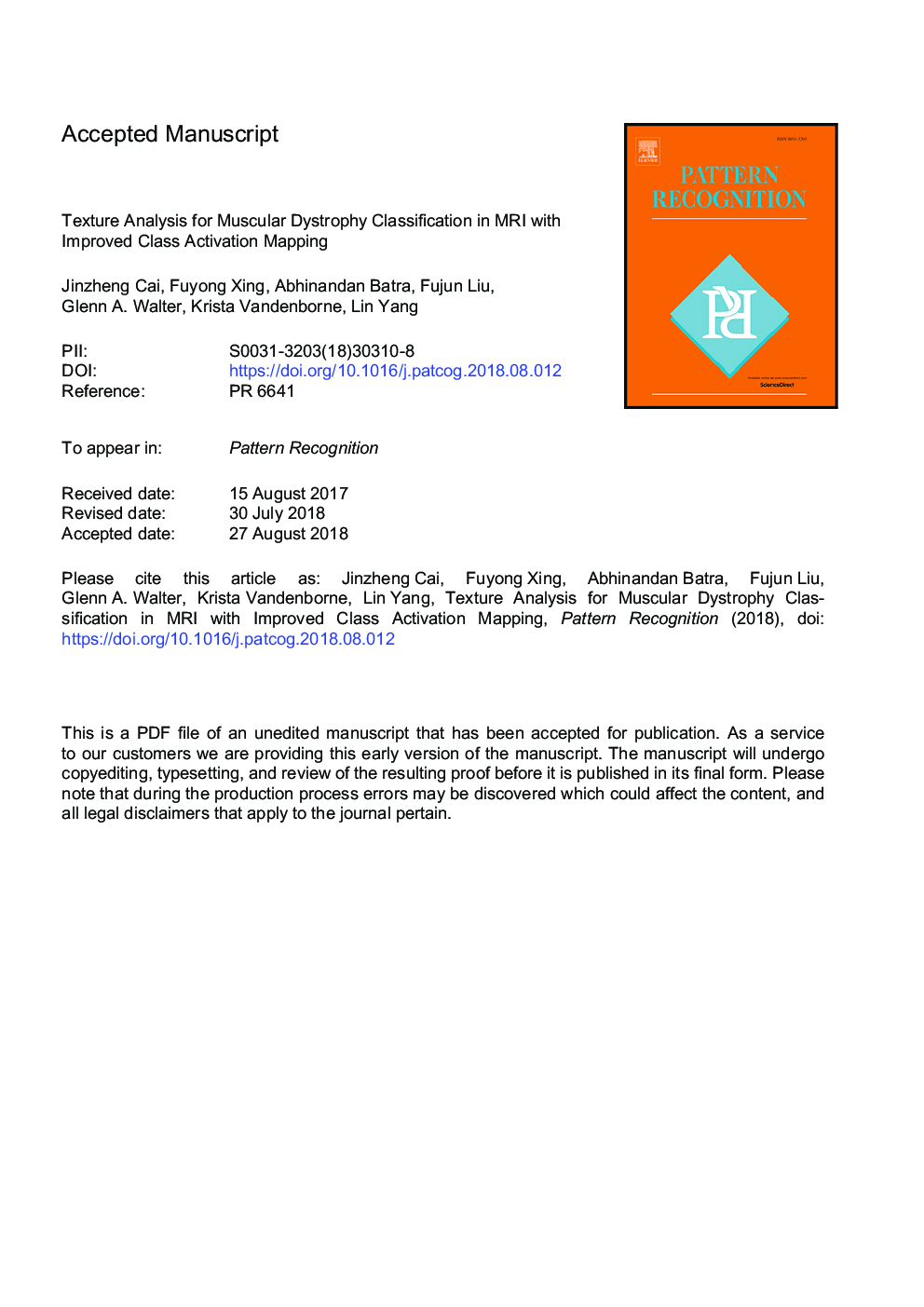| کد مقاله | کد نشریه | سال انتشار | مقاله انگلیسی | نسخه تمام متن |
|---|---|---|---|---|
| 11263761 | 1646392 | 2019 | 34 صفحه PDF | دانلود رایگان |
عنوان انگلیسی مقاله ISI
Texture analysis for muscular dystrophy classification in MRI with improved class activation mapping
دانلود مقاله + سفارش ترجمه
دانلود مقاله ISI انگلیسی
رایگان برای ایرانیان
کلمات کلیدی
موضوعات مرتبط
مهندسی و علوم پایه
مهندسی کامپیوتر
چشم انداز کامپیوتر و تشخیص الگو
پیش نمایش صفحه اول مقاله

چکیده انگلیسی
The muscular dystrophies are made up of a diverse group of rare genetic diseases characterized by progressive loss of muscle strength and muscle damage. Since there is no cure for muscular dystrophy and clinical outcome measures are limited, it is critical to assess the progression of MD objectively. Imaging muscle replacement by fibrofatty tissue has been shown to be a robust biomarker to monitor disease progression in DMD. In magnetic resonance imaging (MRI) data, specific texture patterns are found to correlate to certain MD subtypes and thus present a potential way for automatic assessment. In this paper, we first apply state-of-the-art convolutional neural networks (CNNs) to perform accurate MD image classification and then propose an effective visualization method to highlight the important image textures. With a dystrophic MRI dataset, we found that the best CNN model delivers an 91.7% classification accuracy, which significantly outperforms non-deep learning methods, e.g., â¯>â¯40% improvement has been found over the traditional mean fat fraction (MFF) criterion for DMD and CMD classification. After investigating every single neuron at the top layer of CNN model, we found the superior classification ability of CNN can be explained by its 91 and 118 neurons were performing better than the MFF criterion under the measurements of Euclidean and Chi-square distance, respectively. In order to further interpret CNNs predictions, we tested an improved class activation mapping (ICAM) method to visualize the important regions in the MRI images. With this ICAM, CNNs are able to locate the most discriminative texture patterns of DMD in soleus, lateral gastrocnemius, and medial gastrocnemius; for CMD, the critical texture patterns are highlighted in soleus, tibialis posterior, and peroneus.
ناشر
Database: Elsevier - ScienceDirect (ساینس دایرکت)
Journal: Pattern Recognition - Volume 86, February 2019, Pages 368-375
Journal: Pattern Recognition - Volume 86, February 2019, Pages 368-375
نویسندگان
Jinzheng Cai, Fuyong Xing, Abhinandan Batra, Fujun Liu, Glenn A. Walter, Krista Vandenborne, Lin Yang,